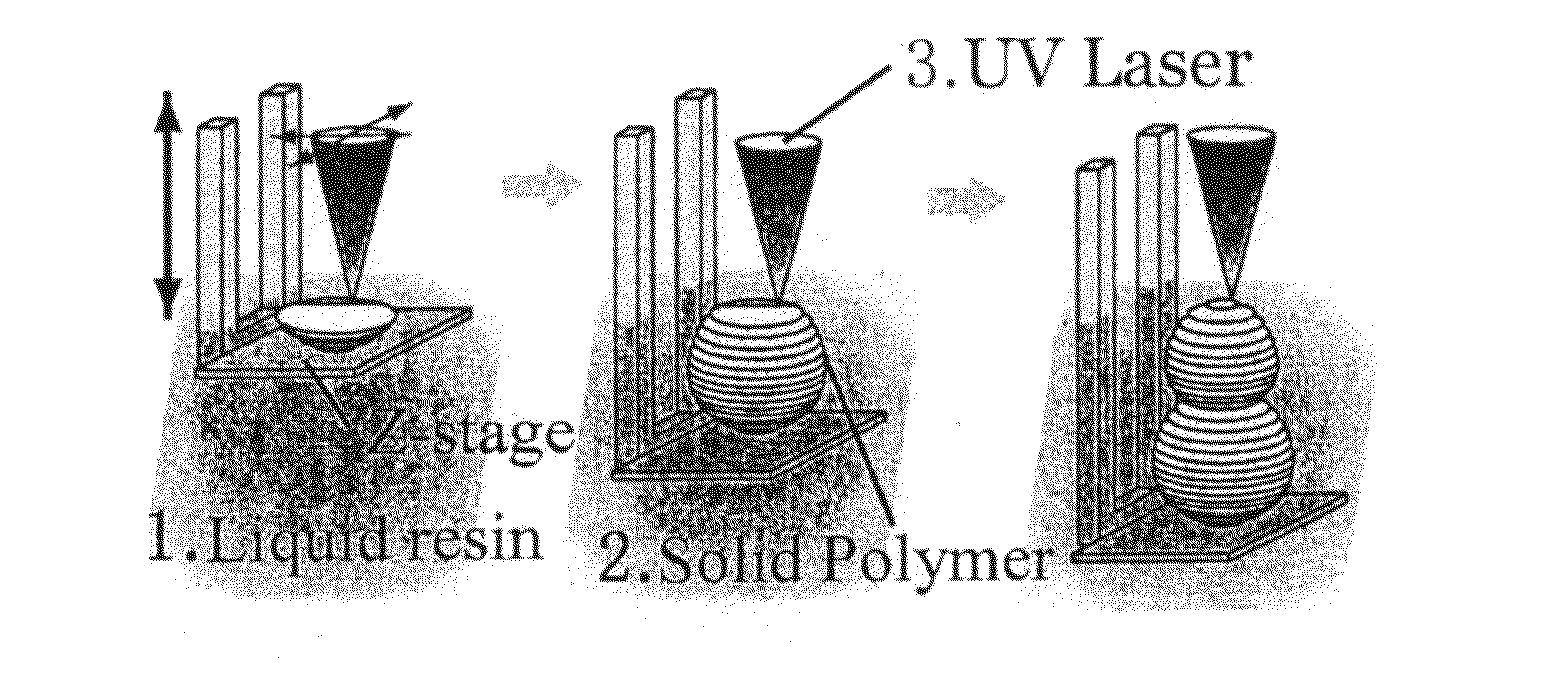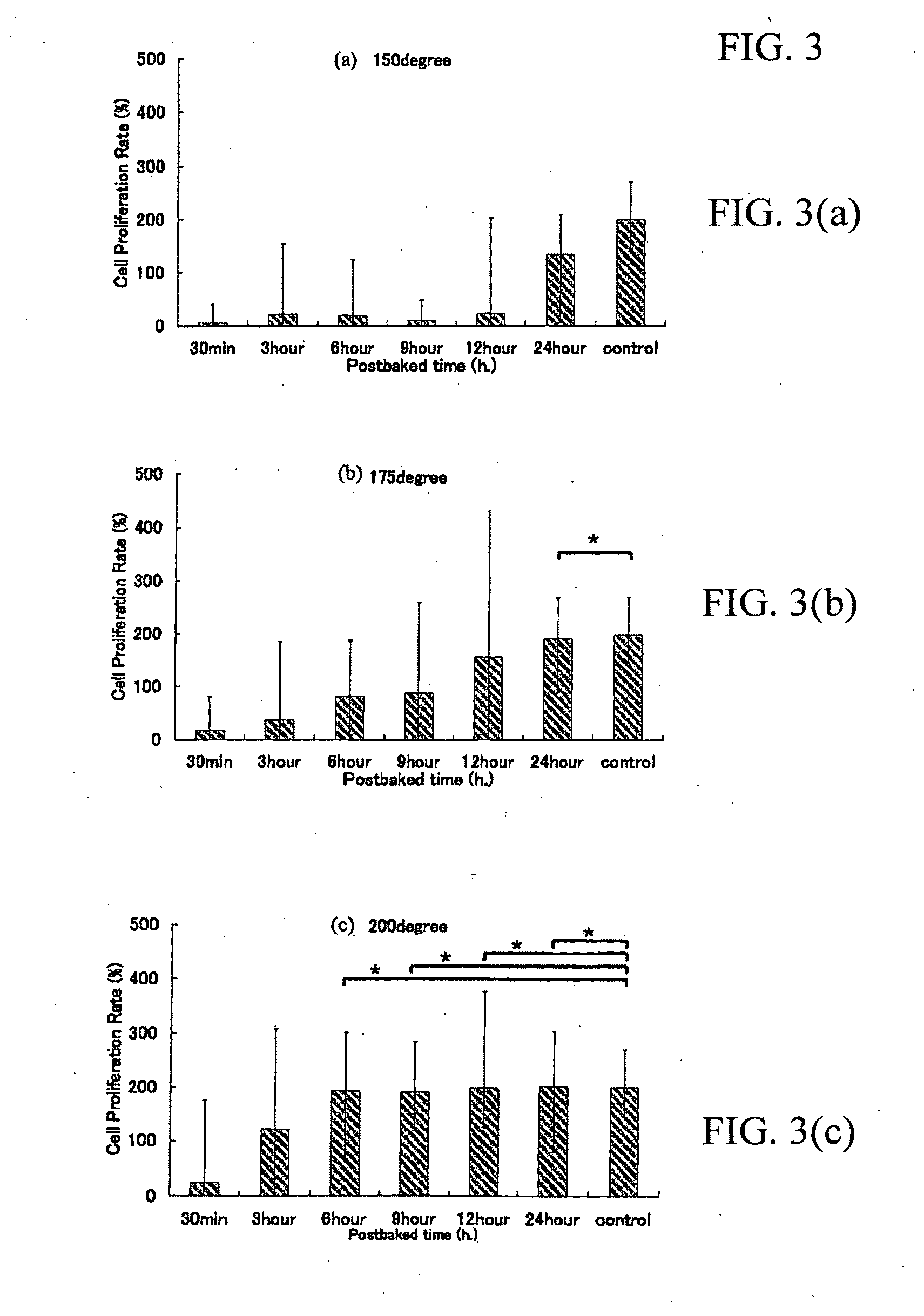Cytocompatible three-dimensional structures fabricated by microstereolithography
a three-dimensional structure and micro-stereolithography technology, applied in the field of fabrication of freeform solid objects by micro-stereolithography, can solve the problems of inability to fabricate non-degradable devices, inability to apply micro-stereolithography to devices, and difficulty in applying methods to devices
- Summary
- Abstract
- Description
- Claims
- Application Information
AI Technical Summary
Benefits of technology
Problems solved by technology
Method used
Image
Examples
embodiment 1
[0095]Three-dimensional cell culture wells were fabricated by microstereolithography. Specifically, cell culture wells measuring 16 mm and 15 mm in outside and inside diameter, respectively, 2 mm wall height, and 0.8 mm bottom thickness were fabricated. The materials used were SCR751 (glass transition temperature, 108° C.; D-Mec, Chuo-ku, Tokyo). The wells were exposed to a mercury xenon lamp (L2423, Hamamatsu Photonics, Hamamatsu City, Shizuoka Prefecture) for one hour to accelerate hardening. The wells were then heated under 18 different combined conditions of temperature (150° C., 175° C., and 200° C.) and time (0.5, 3, 6, 9, 12, and 24 hours). Rat adrenal pheochromocytoma cell line (PC12) was seeded in the wells, and the number of cells after 48 hours was counted and compared (FIG. 2). According to the result of the student's t-test, there was no significant difference between the ratio of the number of cells on the cell culture wells, which were heated at 200° C. for 6 hours or...
PUM
| Property | Measurement | Unit |
|---|---|---|
| Length | aaaaa | aaaaa |
| Time | aaaaa | aaaaa |
| Glass transition temperature | aaaaa | aaaaa |
Abstract
Description
Claims
Application Information
 Login to View More
Login to View More - R&D
- Intellectual Property
- Life Sciences
- Materials
- Tech Scout
- Unparalleled Data Quality
- Higher Quality Content
- 60% Fewer Hallucinations
Browse by: Latest US Patents, China's latest patents, Technical Efficacy Thesaurus, Application Domain, Technology Topic, Popular Technical Reports.
© 2025 PatSnap. All rights reserved.Legal|Privacy policy|Modern Slavery Act Transparency Statement|Sitemap|About US| Contact US: help@patsnap.com



